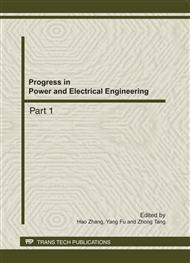p.3
p.9
p.19
p.24
p.29
p.33
p.37
p.41
The Influence of Solid Wall-Fluid Molecular Interaction on Transport Properties of Gases in a Mini/micro Channel
Abstract:
The physical model and analytical method are put forward for considering the molecular interaction between solid wall and gas fluid when dealing with convective heat transfer in macro/mini/micro channels based on the boundary layer theory concept, the molecular kinetic theory of gases, structural chemistry and continuum hypothesis. The influence rule of wall-fluid intermolecular forces to the transport properties of gases located in boundary layer region is studied applying proposed models. The gas density variation distribution equation including the wall-fluid molecular interaction is derived with continuum media integral approach. The theoretical results show that the fluid diffusion is independent of the wall-fluid interaction but visosity and heat conductivity not. According to the gas molecular density distribution function and molecular dynamics, new formulae were developed for calculating viscidity coefficient and thermal conductivity with wall-fluid interacting effect for a fluid. The research results provide scientific reference for further study and exploitation on fluid flow and heat transfer of mini/micro channels. In addition, the formulae offered in this paper to compute the transport properties of gases are also suitable for fine analysis of boundary layer in macro-scale channels.
Info:
Periodical:
Pages:
9-18
Citation:
Online since:
October 2011
Authors:
Price:
Сopyright:
© 2012 Trans Tech Publications Ltd. All Rights Reserved
Share:
Citation:


